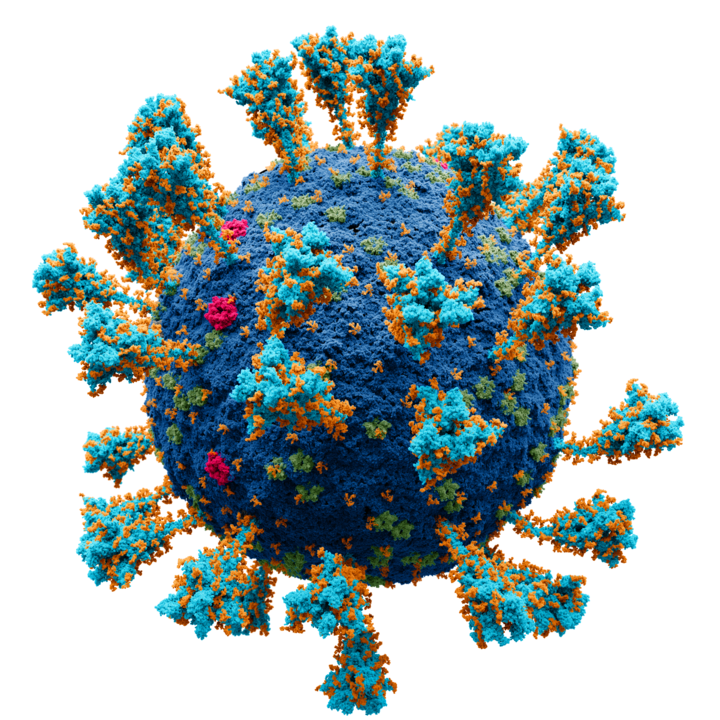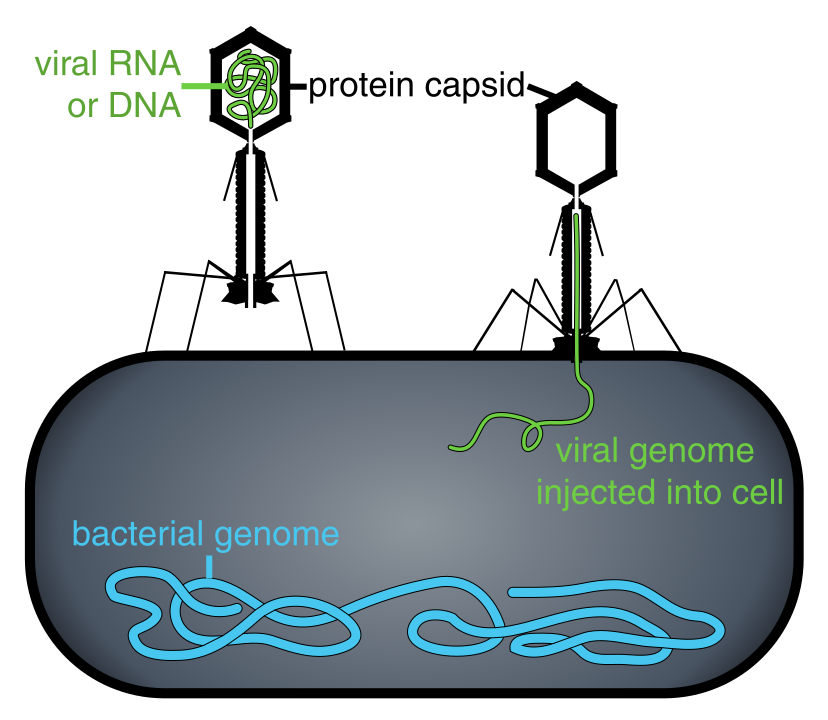
I learned this today. How does a virus infect the body? By replicating itself inside the body’s living cells.
A virus is not a cell. It is called a virion. A cell has a cell membrane, a nucleus, and cytoplasm. A virion doesn’t have any of that. It is made up of a set of genes inside a protective protein shell called a capsid. Viruses come in different sizes. The smallest is 20 nanometers and the largest is about 500 nanometers in diameter and 1,000 nanometers long. A virus is not technically alive, it is just a piece of information. It cannot survive or replicate without having a host cell.
So, how does a virus infect the body? Well, not all viruses do. There are an enormous number of viruses on Earth. There are, apparently, more viruses on Earth than there are stars in the universe. That is a staggering amount. Not all of them infect humans. Different viruses have evolved to target different hosts. For the sake of ease, let’s look at viruses that target humans.
First, the virus has to get inside the body. They are generally transmitted in bodily fluids, such as from coughing or sneezing. This puts them in the air, or on surfaces. If someone else walks through the air with those viruses in it, they breathe them in. Likewise, if they touch a surface with the viruses on it and put their fingers in their mouth, nose, or eye, the viruses can enter the body. They can also get in through cuts in the skin.
Then the virus has to get to the cell it is going to infect. Different viruses target different cells in our bodies. Some attach to the throat, some the lungs. Some viruses can enter our bodies through food, blood transfusions, or semen. These viruses can travel around in the blood stream and reach the kidneys or the liver. Wherever they go, the way the viruses infect the body is pretty much the same.
The cells in our bodies have specific receptors. These receptors are there to interact with hormones, drugs, and antigens. The receptor is a protein molecule and when something binds with the receptor, it can change the activity of the cell. Viruses use these receptors to infect our cells.

Viruses have evolved a protein that matches the receptor on the specific cell they are targeting. When the protein locks onto the receptor, it triggers the cell. The outer capsid shell of the virus fuses with the oily membrane of the human cell and the virus completely enters the cell with its genetic material.
Once the virus has entered the cell, it can start to replicate itself. First, the virus uses enzymes that are present in the host cell to dissolve its outer layer. After this is done, the genetic material is set free. The DNA or the RNA in the virus hijacks the cell’s own DNA and instructs the cell to start replicating the virus’s genome and proteins. These proteins and genes are then packed into new viruses with a capsid outer layer.
The last step is to release the new viruses so that they can infect other cells and keep the virus growing. This is done in two ways. The virus can instruct the cell to release the new virions, and they “bud” out of the cell. This doesn’t kill the cell and the cell can keep producing more viruses. The other way is to kill the cell. The cell dies, bursting open and releasing the viruses. These viruses then find new cells and the process repeats itself.
The body knows when there are viruses present because it can read the signals left by proteins on the surface of the cells. When it detects these proteins, the immune response is triggered and white blood cells are launched to kill the viruses. Sometimes they can do it, but sometimes the viruses reproduce faster than the immune system can handle, such as with smallpox. However, a virus that quickly kills its host doesn’t make much evolutionary sense because the virus’s only goal is to reproduce itself as much as possible. If the host is dead, it cannot reproduce.
So, how does a virus infect a body? By inserting its DNA into a cell and tricking the cell into producing more versions of the virus. And this is what I learned today.
Sources:
https://www.scripps.edu/covid-19/science-simplified/how-the-novel-coronavirus-infects-a-cell/
https://theconversation.com/what-is-a-virus-how-do-they-spread-how-do-they-make-us-sick-133437
https://askabiologist.asu.edu/questions/how-viruses-work
https://www.cancer.gov/publications/dictionaries/cancer-terms/def/cell
https://www.khanacademy.org/test-prep/mcat/cells/viruses/a/are-viruses-dead-or-alive
https://en.wikipedia.org/wiki/Virus
https://www.britannica.com/science/virus/Size-and-shape
https://medicine.yale.edu/coved/modules/virus/hijacking/
https://www.news-medical.net/health/How-does-Viral-Replication-Work.aspx

Pingback: #362 How much of your liver can you live without? - I Learned This Today